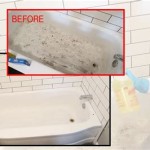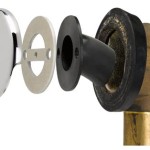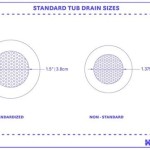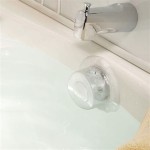How Long Does Bathtub Refinishing Last?
Bathtub refinishing, also referred to as bathtub resurfacing or bathtub reglazing, is a cost-effective alternative to replacing a worn, damaged, or outdated bathtub. It involves applying a new coating to the existing surface, restoring its appearance and extending its lifespan. However, a common question that arises when considering this option is: how long does bathtub refinishing last? The answer is not a simple one, as several factors influence the longevity of the refinished surface.
Understanding these influencing factors is crucial for homeowners and property managers to make informed decisions about whether bathtub refinishing is a suitable solution for their needs. This article delves into the typical lifespan of a refinished bathtub, the key factors that affect its durability, and best practices for maintaining the refinished surface to maximize its lifespan.
Typical Lifespan of a Refinished Bathtub
The lifespan of a refinished bathtub generally ranges from 5 to 15 years, but this is highly dependent on the quality of the materials used, the skill of the technician performing the refinishing, and the care and maintenance provided by the homeowner. Lower quality materials and shoddy workmanship can significantly reduce the lifespan, potentially leading to peeling, chipping, or discoloration within a year or two. Conversely, high-quality materials, professional application, and diligent maintenance can extend the lifespan well beyond the typical range.
It's important to note that this estimated lifespan is based on typical usage and environmental conditions. Bathtubs in high-traffic areas, such as rental properties or homes with large families, may experience more wear and tear, potentially shortening the lifespan of the refinished surface. Similarly, exposure to harsh chemicals or abrasive cleaning products can accelerate the deterioration of the coating.
Factors Affecting the Longevity of Bathtub Refinishing
Several key factors contribute to the overall lifespan of a refinished bathtub. Understanding these factors allows homeowners to make informed choices during the refinishing process and adopt maintenance practices that promote longevity.
Material Quality: The type of coating used in the refinishing process has a significant impact on its durability and lifespan. Common coating options include epoxy, polyurethane, and acrylic urethane. Acrylic urethane is generally considered the most durable and long-lasting option, offering superior resistance to chipping, scratching, and chemicals. Epoxy coatings are often less expensive but may be more susceptible to yellowing or cracking over time. Polyurethane coatings fall somewhere in between, offering a balance of durability and cost-effectiveness. It is crucial to inquire about the specific type of coating used and its expected performance characteristics before proceeding with the refinishing.
Surface Preparation: Proper surface preparation is paramount to achieving a durable and long-lasting finish. This involves thoroughly cleaning the bathtub to remove any soap scum, mineral deposits, and existing coatings. The surface must then be etched or sanded to create a rough texture that allows the new coating to bond effectively. Any imperfections, such as chips or cracks, must be repaired before applying the coating. Failure to properly prepare the surface can lead to poor adhesion, resulting in peeling or chipping.
Application Technique: The skill and experience of the technician applying the coating also play a crucial role in the refinishing's longevity. A professional technician will have the necessary equipment and expertise to apply the coating evenly and smoothly, ensuring proper adhesion and preventing imperfections. They will also be knowledgeable about the proper curing times and temperature requirements for the specific coating being used. Choosing a reputable and experienced refinishing company is essential for achieving optimal results.
Curing Time: Allowing adequate curing time is critical for the coating to fully harden and bond to the underlying surface. The recommended curing time varies depending on the type of coating used and the environmental conditions. Generally, it is recommended to avoid using the bathtub for at least 24 to 48 hours after refinishing. Rushing the curing process can result in a soft or tacky finish that is prone to damage.
Usage and Maintenance: The way the refinished bathtub is used and maintained also significantly affects its lifespan. Avoiding harsh chemicals, abrasive cleaners, and heavy impacts can help to prolong the finish's life. Regular cleaning with mild soap and water is recommended to prevent the build-up of soap scum and mineral deposits. Promptly repairing any chips or cracks can prevent further damage and extend lifespan.
How to Maximize the Lifespan of Your Refinished Bathtub
To ensure your refinished bathtub lasts as long as possible, it is essential to adopt preventative measures and proper maintenance practices.
Choose a Reputable Refinishing Company: Selecting a reputable and experienced refinishing company is the most important step in ensuring a long-lasting finish. Look for companies with a proven track record, positive customer reviews, and a warranty on their work. A reputable company will use high-quality materials, employ skilled technicians, and provide excellent customer service.
Adhere to the Recommended Curing Time: Resist the urge to use the bathtub before the recommended curing time has elapsed. Allowing the coating to fully harden is crucial for its durability and longevity.
Use Non-Abrasive Cleaning Products: Avoid using harsh chemicals, abrasive cleaners, or scouring pads to clean the refinished bathtub. These products can damage the coating and shorten its lifespan. Instead, use mild soap and water or cleaning products specifically designed for refinished surfaces.
Avoid Abrasive Cleaning Tools: Sponges can trap abrasive particles that can damage the refinished surface. Use a soft cloth or microfiber towel to clean the bathtub.
Rinse Thoroughly After Each Use: After each use, rinse the bathtub thoroughly with water to remove any soap scum or shampoo residue. This will help prevent the build-up of mineral deposits and stains.
Protect the Surface From Scratches and Impacts: Avoid dropping heavy objects onto the refinished surface, as this can cause chipping or cracking. Consider using a bath mat or shower caddy to protect the surface from scratches.
Repair Chips and Cracks Promptly: If you notice any chips or cracks in the refinished surface, repair them promptly to prevent further damage. Many refinishing companies offer touch-up kits for minor repairs. Alternatively, you can hire a professional to repair the damage.
Ventilate the Bathroom: Proper ventilation is essential for preventing moisture build-up in the bathroom, which can contribute to the deterioration of the refinished surface. Run the exhaust fan during and after showering or bathing to remove excess moisture.
Consider a Non-Slip Coating: Applying a non-slip coating to the bottom of the bathtub can help prevent slips and falls, which can also damage the refinished surface. Non-slip coatings are available in a variety of textures and colors.
Regular Inspections: Periodically inspect the refinished surface for any signs of damage, such as peeling, chipping, or discoloration. Addressing these issues promptly can prevent them from escalating and extending the lifespan of the refinishing. Contact your refinishing company to discuss repair options if you notice any significant damage.
Avoid Prolonged Exposure to Water: While bathtubs are obviously designed for water exposure, avoid leaving standing water in the bathtub for extended periods. This can weaken the coating over time, especially if the water is hard or contains harsh chemicals.
Understand and Follow the Warranty: Review the warranty provided by the refinishing company and understand its terms and conditions. Adhering to the recommended maintenance practices outlined in the warranty can help ensure that you are covered in case of any issues with the refinished surface.
By understanding the factors that affect the longevity of bathtub refinishing and implementing these preventative measures and maintenance practices, homeowners can significantly extend the lifespan of their refinished bathtubs and enjoy a beautiful and functional bathing space for many years to come.

How Long Does Reglazing A Bathtub Last

Bathtub Refinishing Todds Porcelain Fiberglass Repair

Bathtub Resurfacing Custom Tub And Tile

My Painted Bathtub 5 Years Later An Honest Review Of Refinished Jacuzzi Tub

Top 4 Customer Questions About Bathtub Refinishing

Bathtub Refinishing Chip Repair Tile Steam Cleaning In Fresno Ca The Medic

Is It Time To Refinish Your Tub Find Out Bay State Refinishing

Bathtub Refinishing Happy Tubs Repair

Bathtub Liners Vs Refinishing Napco Ltd

How Long Should Your Bathtub Last After Reglazing Badeloft
Related Posts








